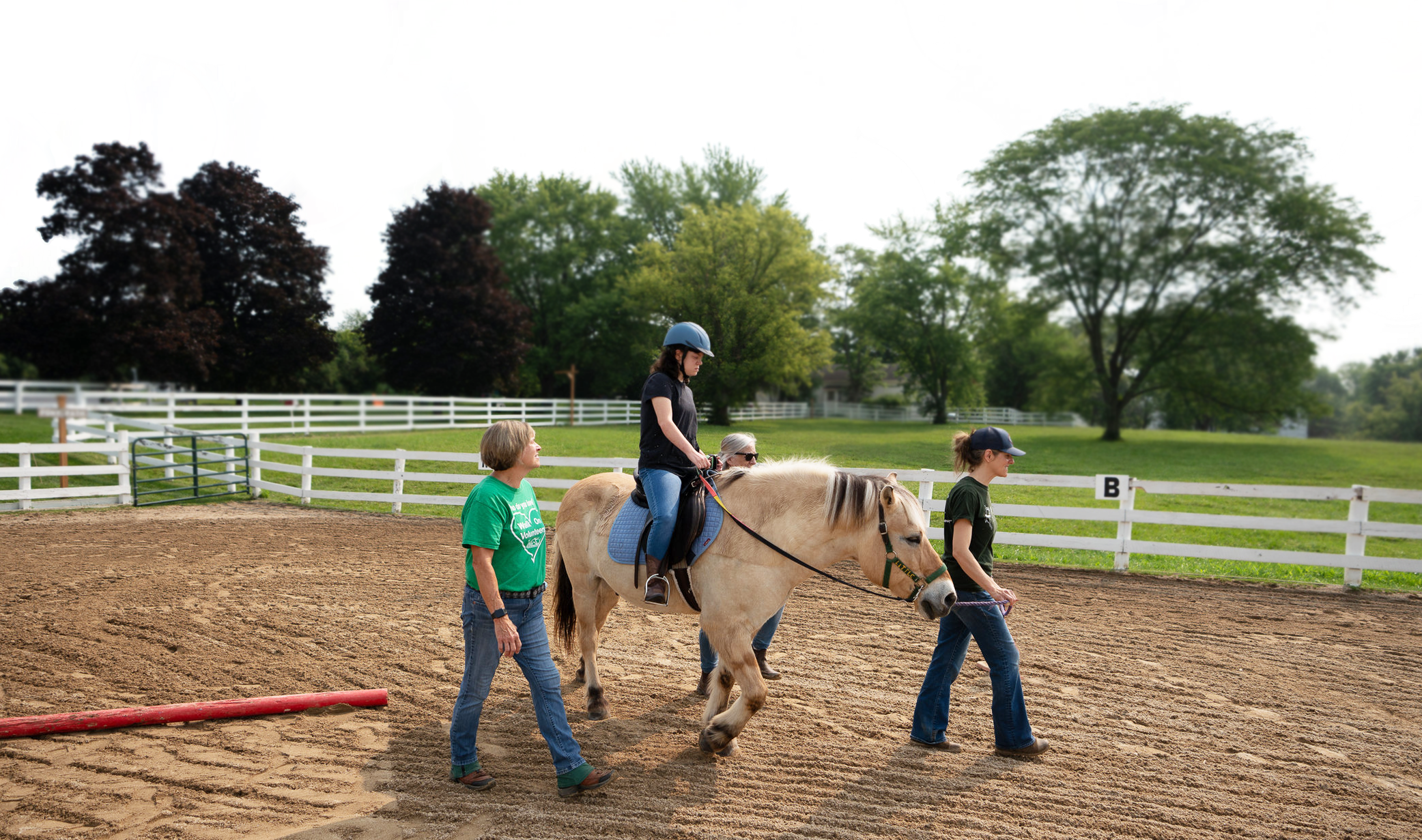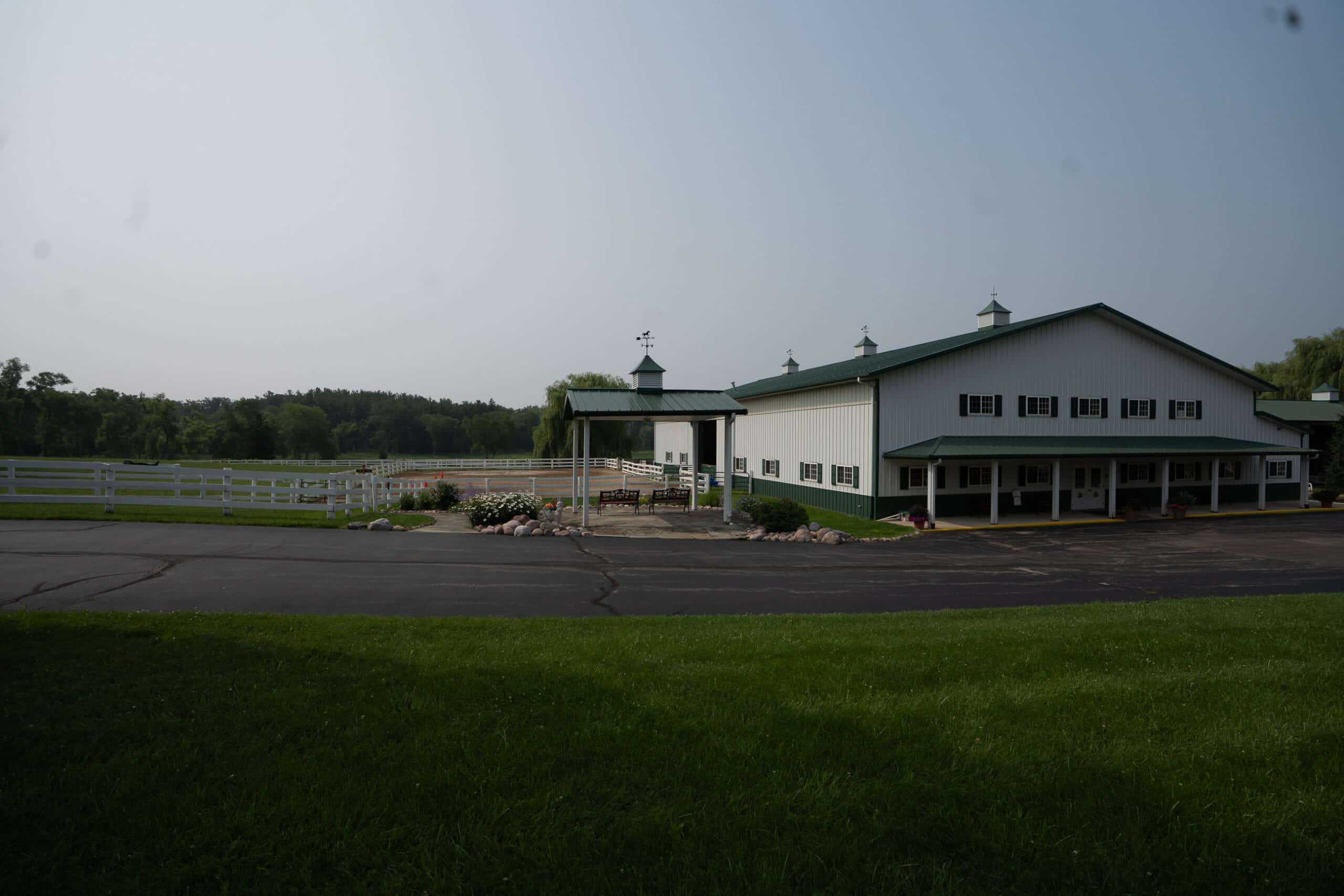The year was 2006 and Walk On became the dream of six ladies involved with equine activities for people with disabilities. Fortunately, that dream became a reality when Walk On was born at Cuba and Hart Roads in Barrington. Since that time, hundreds of equine experiences for children, adults and senior citizens have taken place at this prestigious address. Barrington and the surrounding communities have supported this program with volunteers and financial support. This support allowed Walk On to maintain and expand its quality program that its founders envisioned.Marion L. May source
What are the goals of equine assisted activities?
All Walk On participants are evaluated prior to admission to the program, at which time, goals for equine assisted activities are determined based on the specific needs of the individual. Goals may include, but are not limited to improving physical skills, cognitive skills, social and emotional development and behavior.
Who can this help
Individuals with physical, neurological, behavioral, and emotional issues related to Brain Injury, Cerebral Palsy, Coordination Disorder, Developmental Disability, Dyspraxia, Multiple Sclerosis, Parkinson’s Disease, Sensory Integration Disorder, autism and many others.
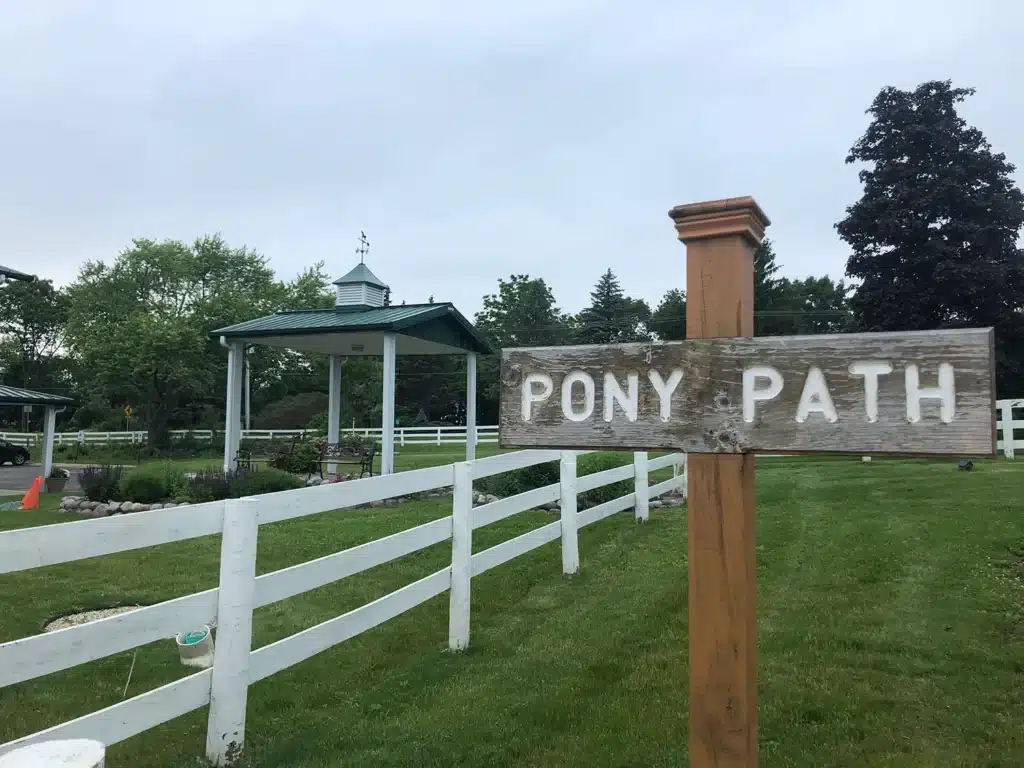
While riding a horse, riders are given the opportunity to feel freedom and power through movement. As the horse walks, the movement is transferred to the rider, providing a combination of sensory, motor, and neurological stimulation. This translates to stronger muscles, better balance and coordination, and improved gait. Just as important as the physical benefits, greater self-confidence and self-esteem can be achieved through the freedom of movement.
The name behind Walk On Farm was named after the command, “Walk On”. This term is used by the participant to have the horse move forward in a therapeutic riding lesson.Marion L. May source
Now Is The Time To Try Something New
Is this safe?
Yes, Walk On utilizes several important safety practices:
- Each horse is screened to ensure the appropriateness of both the quality of movement and a good working temperament.
- Walk On enforces a number of policies including limiting horse work hours and limiting the amount of weight they carry.
- Instructors are are PATH Int’l (Professional Association for Therapeutic Horsemanship International) certified and adhere to the guidelines set by PATH.
- When working with the horse, all participants wear safety helmets.
- All participants are evaluated by a licensed Occupational Therapist prior to starting lessons, and the lesson plans are written specifically for each participant. Every rider has different protocol, which could be anywhere from completely independent riding to riding with a horse leader multiple side walkers.
- Walk On is a PATH member center and follows their policies, including the mandatory use of ASTM-SEI approved helmets when on or near horses. Walk On encourages all participants to purchase their own helmets, for obvious health and safety purposes. Consult with the instructor regarding appropriate and approved safety helmets available.
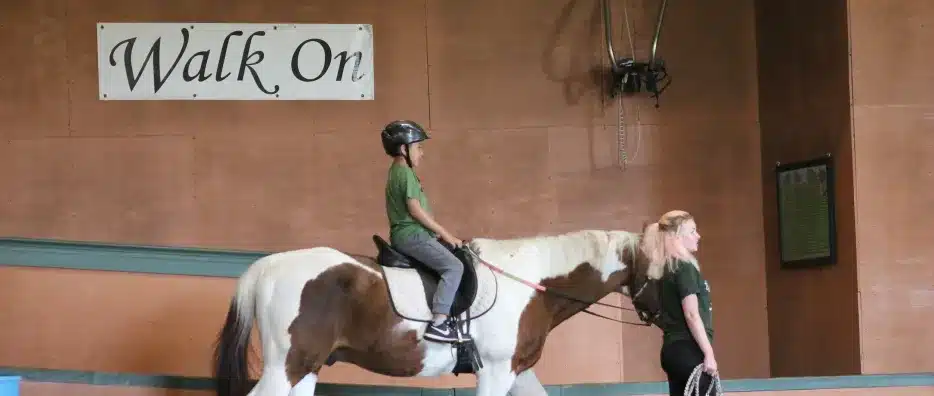
How does a participant get on to the horse?
Walk On has specially adapted equipment which enable the participant to be able to mount the horse, including an ADA accessible ramp, special lift, as well as adapted mounting blocks for those who need assistance.
What are the age limits?
Walk On accepts children, adolescents and adults. All participants are evaluated prior to acceptance in the program. Children as young as three years and adults into their senior years have all participated. The program is designed to meet the specific needs of the participant.
How about a weight limit?
To protect our therapy horses, Walk On has a policy that limits the weight carried in a session. Each participant whose weight exceeds 175 pounds will be considered individually and evaluated to determine eligibility. This weight includes the rider as well as the weight of the saddle and tack.
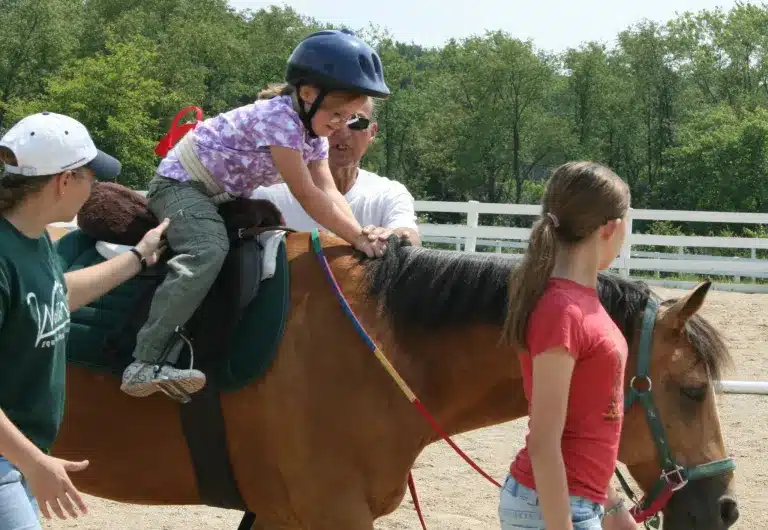
How does Walk On support this program?
Walk On is a 501(c)(3) not-for-profit charitable organization. Since our beginning in 2006, Walk On has attempted to keep our fees affordable so more people can participate. Walk On does not receive any support from the federal or state government. The riding fees are not covered by most health insurance plans. Our goal is to not turn anyone away due to inability to pay. Our participants are ask to pay a small portion of the total cost for the program. Additional dollars are raised by the generosity of our supporters via personal donations and company match programs, quarterly fundraisers, and grants from various corporations and foundations.
Film & Fun Fundraiser
Road Rally 2025
Summer Session 2025
Walk On’s 2024 Annual Report
Discover the different ways you can help support our cause.
